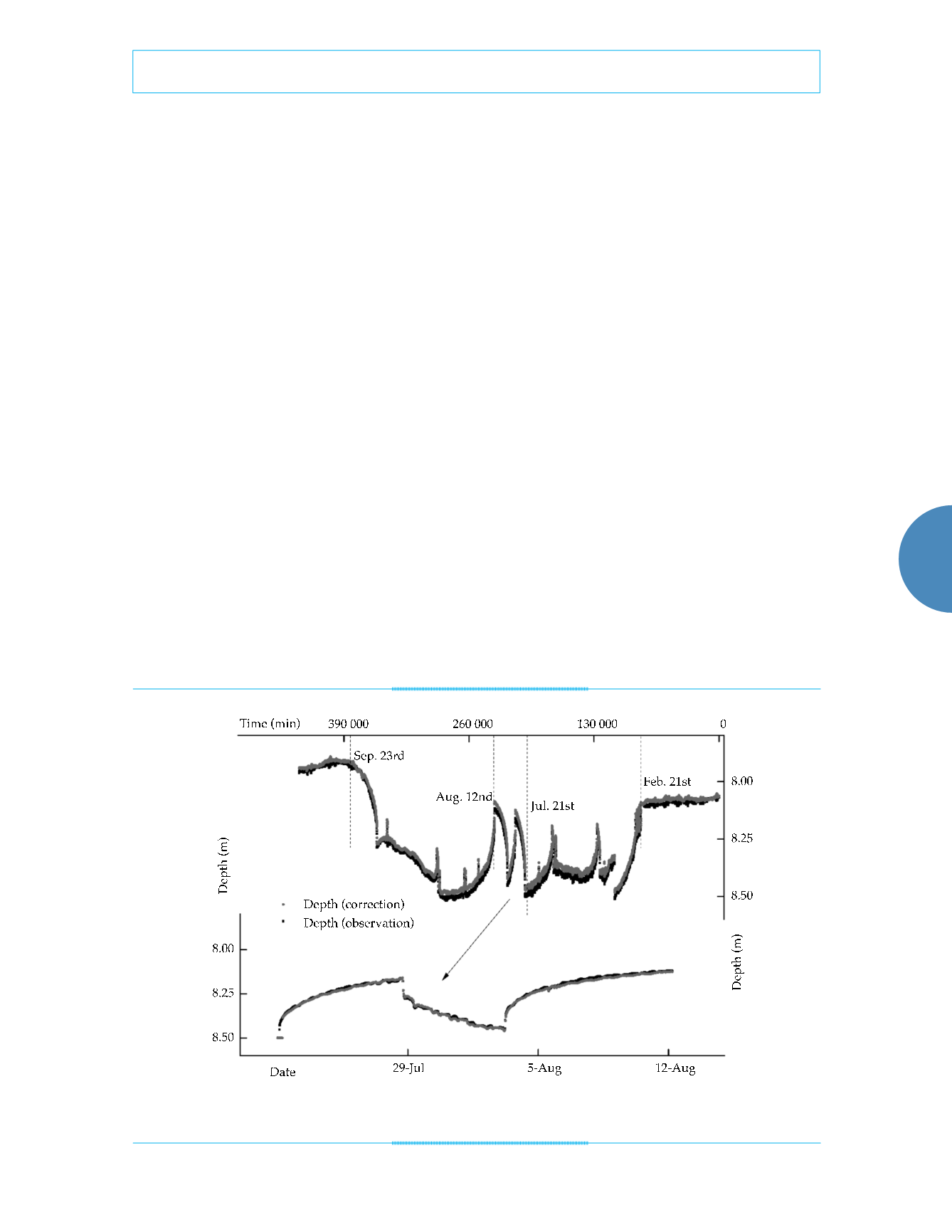
155
Wei
et al
.,
Water table response to a pumping test in the hinterland core area of the Taklimakan Desert, China
Tecnología y Ciencias del Agua
, vol. VIII, núm. 2, marzo-abril de 2017, pp. 151-158
ISSN 2007-2422
•
Results and discussions
Barometric pressure correction results
From the figure 3, we can conclude that, at the
period of Jan. 1st to Feb. 21st and Sep. 23rd to
Dec. 31st, the water level was roughly stable,
which is consistent with the main water use
period of the project from March to November.
Though the pumping well was performed in a
production well, the test was started after the
water level reaching stable judged by long time
observation of recovery period.
The previous researchers have done so many
about barometric pressure correction (Spane,
2002; Dong, Shimada, Kagabu, & Yang, 2015)
and hydrogeological parameters’ calculation
(Lubczynski & Roy, 2005; Samuel & Jha, 2014),
But for the combination of the two methods,
relevant research is relatively small (Allen,
2008; Vilhelmsen, Christensen, Behroozmand, &
Søltoft, 2014), and most of them used barometric
efficiency (Acworth & Brain, 2008; Delcourt-
Honorez & Scholz, 2014) to correct the influence
of barometric pressure, which didn’t consider
the delay effect to vadose zone soil layer. The
delay effect is considered in BETCO software,
and the result of pressure correction is more
accurate.
The regression deconvolution method is
used to correct the deviation that baromet-
ric pressure variation causes the measured
groundwater level, and the results seem to be
good. And it is easy concluded that barometric
pressure correction is crucial to the accuracy of
groundwater level in pumping tests, which is
of great concern to delay factor. In the BETCO,
though we conduct that maximum response
time as 12, it can be noticed that at the prelimi-
nary stage of observation, there are still exits the
phenomenon of delaying. After the correction
for barometric pressure, the annual water depth
has been changed; the maximum of the initial
water depth was 8.518, though, with the correc-
tion, it was 8.491.
It is important to note that other natural
conditions, such as tidal, meteorological, and
hydrological factors will also affect the water
Figure 3. The comparison of the water depth with data reconciliation.


